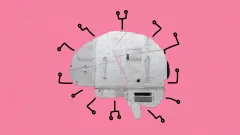Take a look inside 10 images
Smithsonian's History Explorer
Pros: Interactives and book recommendations offer nice variety, while primary sources make history real.
Cons: No way to save favorite lessons or give assignments to students. Design could use updating.
Bottom Line: This is a handy resource that, with some effort, will uncover resources for kick-starting curious learning.
This site is jam-packed with ready-to-teach lessons. Everything is standards-based and labeled as such, which gives you more time to pick the most appropriate lessons for your students. Students can also explore the site on their own, but that'll work best for older, self-directed students. However, it can be an ideal source for research report material or an in-class presentation since it aggregates tons of primary sources.
No matter what you or your students are after, prepare to do some digging, and be aware that there are broken links as well as links out to all kinds of different sites. This can be a little disorienting. Thankfully, filtering works well and is well-focused. The books search in particular has a "bilingual" filter, which helps surface content for ELLs. For the tech savvy, featured resources and users' search results can be saved as an RSS feed to make checking for updates easier.
To orient yourself, check out the How to Use This Site page for descriptions and brief tutorial videos. The Teacher Resources section also includes blog posts, tips, guides to teaching with primary sources, and many 30-minute webinars that highlight key materials.
Smithsonian's History Explorer is a website developed by the National Museum of American History that offers online resources for teaching and learning American history. There's no login option or way to save data, but you can browse all that the site has to offer and use the content you find in the classroom. The homepage includes a Featured Artifact, Featured Resources, the museum's Twitter feed, and a rotating board of highlighted material. You can filter search results by grade, resource type, historical era, and cross-curricular connection. Resource types span from Artifacts (selected from the museum's millions of objects) to Lessons & Activities to Interactives & Media, and the 10 eras include Beginnings to 1620 and 1968 to the Present.
Once you've chosen your filters, you'll receive a list of resources, such as "All Aboard the Train," a lesson plan about American train travel. Click through, and the national standards it meets appear below a brief description; click Get Resource and the content is yours. It may take you to another Smithsonian site, or sometimes a third-party site. You'll also see a list of recommended books that fit the search criteria, which can be filtered by reading level, genre, and more. Alternatively, you can browse resources by major theme, or check out the Web Links section for external websites that have been vetted for content and relevance.
With the help of Smithsonian's History Explorer, students can dig deeper into specific moments in history, or they can get a broad overview of an era. Everything they do will be anchored in primary source study. Some artifacts are classics, such as Dorothea Lange's iconic Depression-era photograph Migrant Mother, but students can also take a look at the history behind lesser-known artifacts and aspects of American culture, like the history of Paint By Number kits during the 1950s. This mixture of the famous and the mundane offers excellent opportunities for inquiry. While the pages for artifacts can be quite clinical, the content still can intrigue students with the help of teacher-created guiding questions and tasks.
The Themes section covers major events and movements, such as Black History Month, Women's Suffrage, Protest and Civic Action, Westward Expansion, and The Great War, making it easy for students to immerse themselves in a topic, or for teachers to locate material to include in lessons or units. The curated list of books, covering the history of the United States region from before the 1600s to the present, is especially useful for finding stories that connect to class content no matter the grade. Staff picks and quick links for award-winning books, such as Newbery Medal winners, make discovering quality books easy.



















